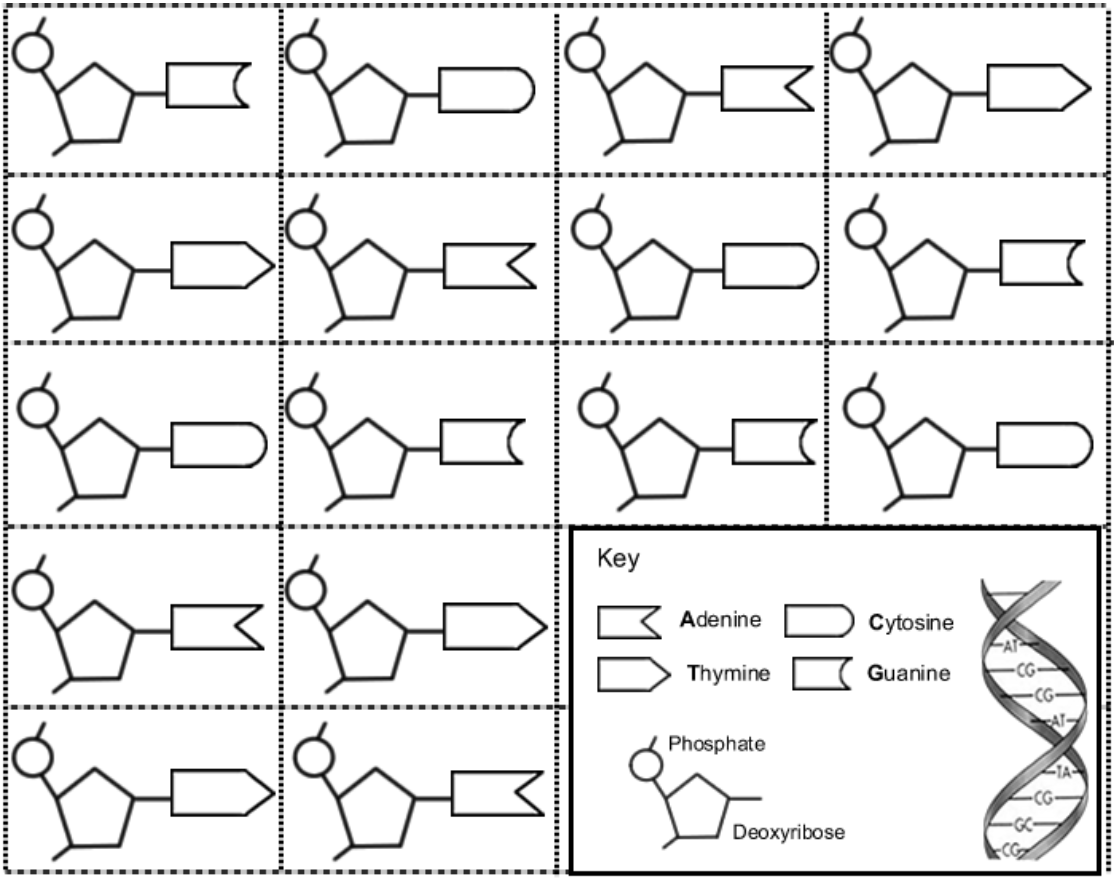Activity: Construct a DNA Model
( \newcommand{\kernel}{\mathrm{null}\,}\)
Instructions
- Cut out each of the nucleotides (used the dash lines as a guide) and arrange them on the grid. Remember the Base-Pair Rule. (You will have one set left over). Separate paper may also be used.
- In order to match the pairs, one of the nucleotides must be arranged upside down. This is intended. The sides of the DNA double helix are arranged in an antiparallel fashion. Think of them like lanes on a highway going different directions.
- Color each of the nucleotides. Thymine = orange | Adenine = green | Guanine = purple | Cytosine = yellow | Deoxyribose = blue | Phosphate = pink

Questions:
- Describe the base-pair rule.
- What three things make up a nucleotide?
- What does anti-parallel mean?


